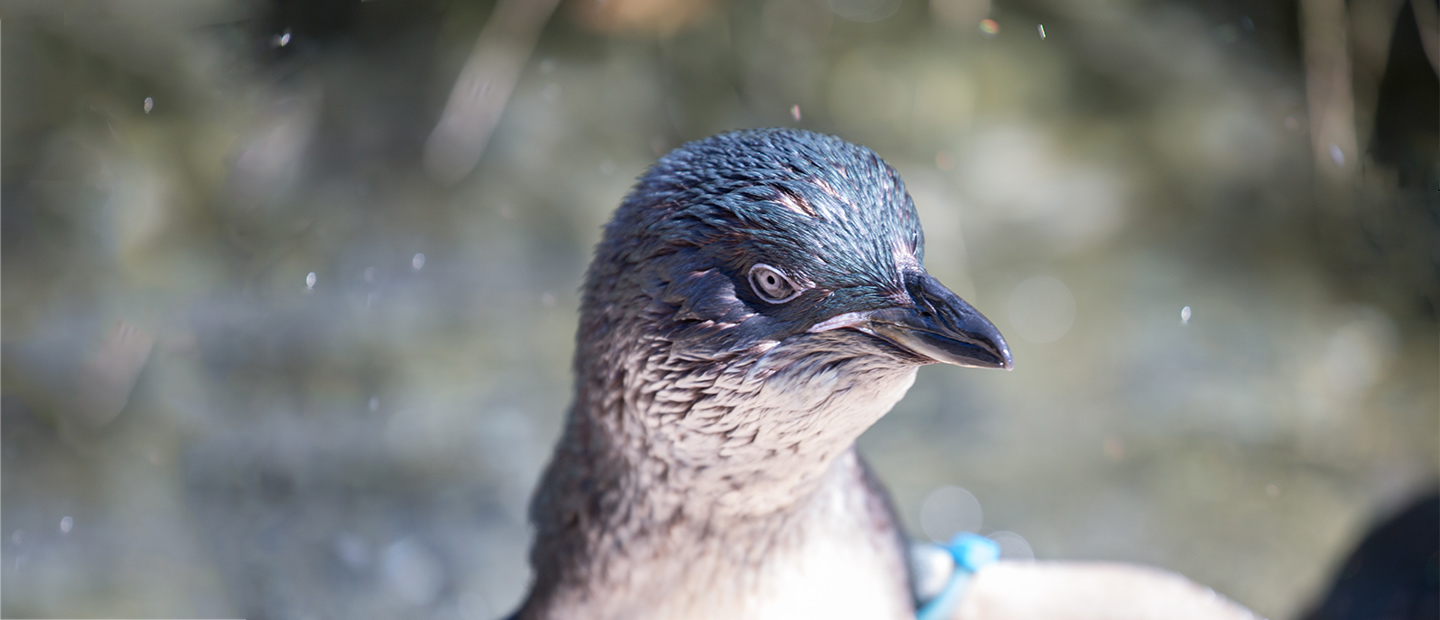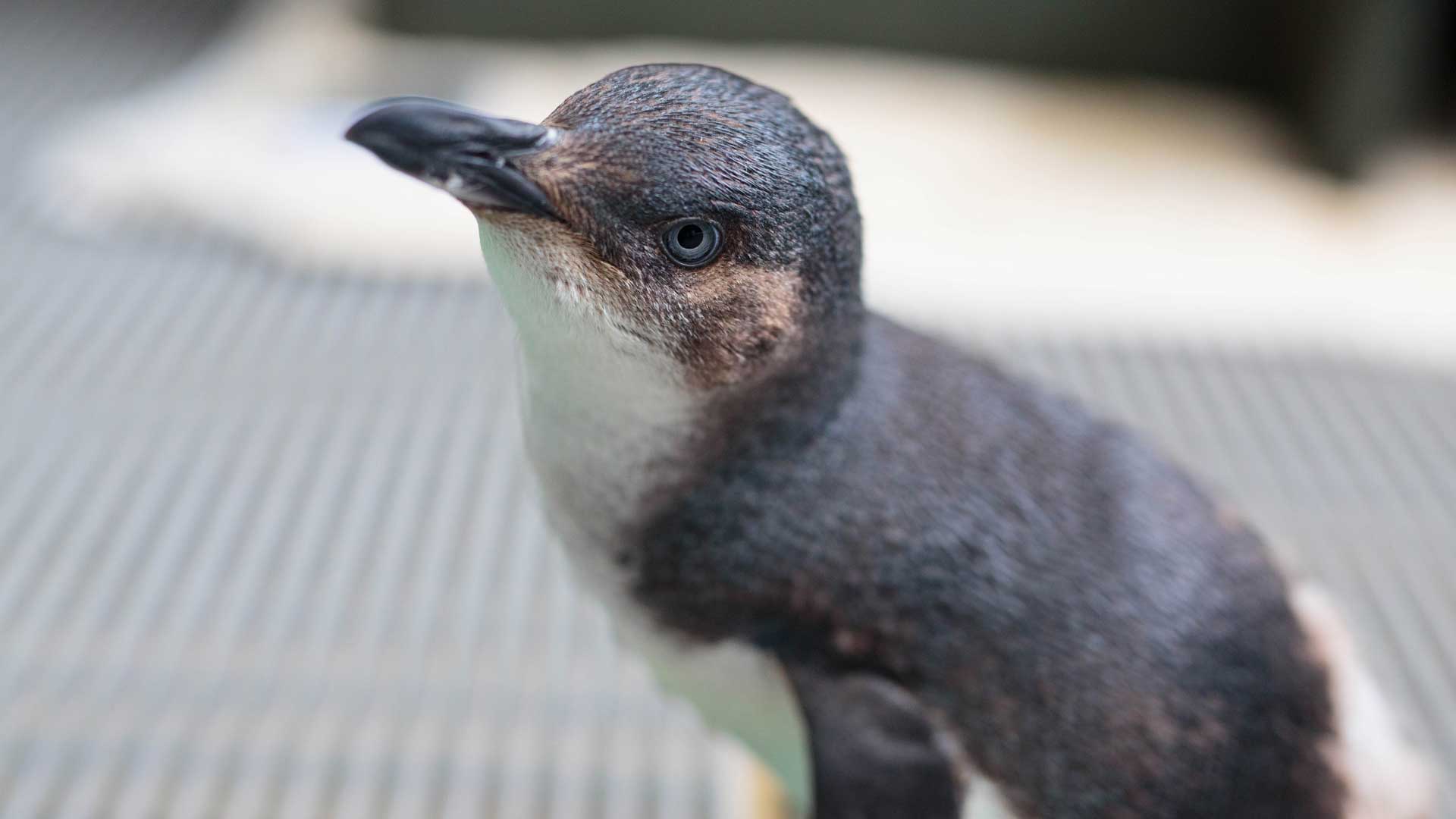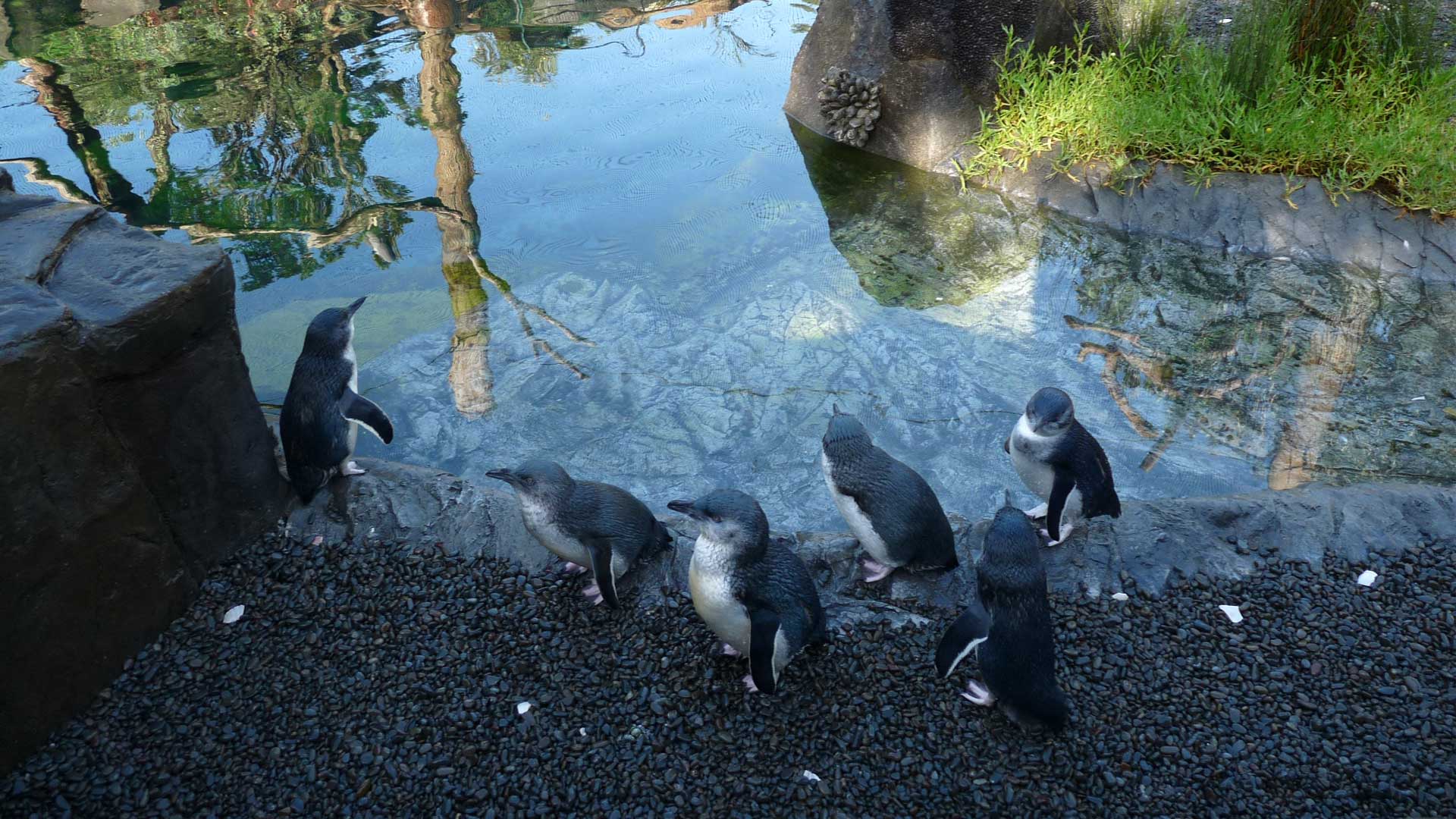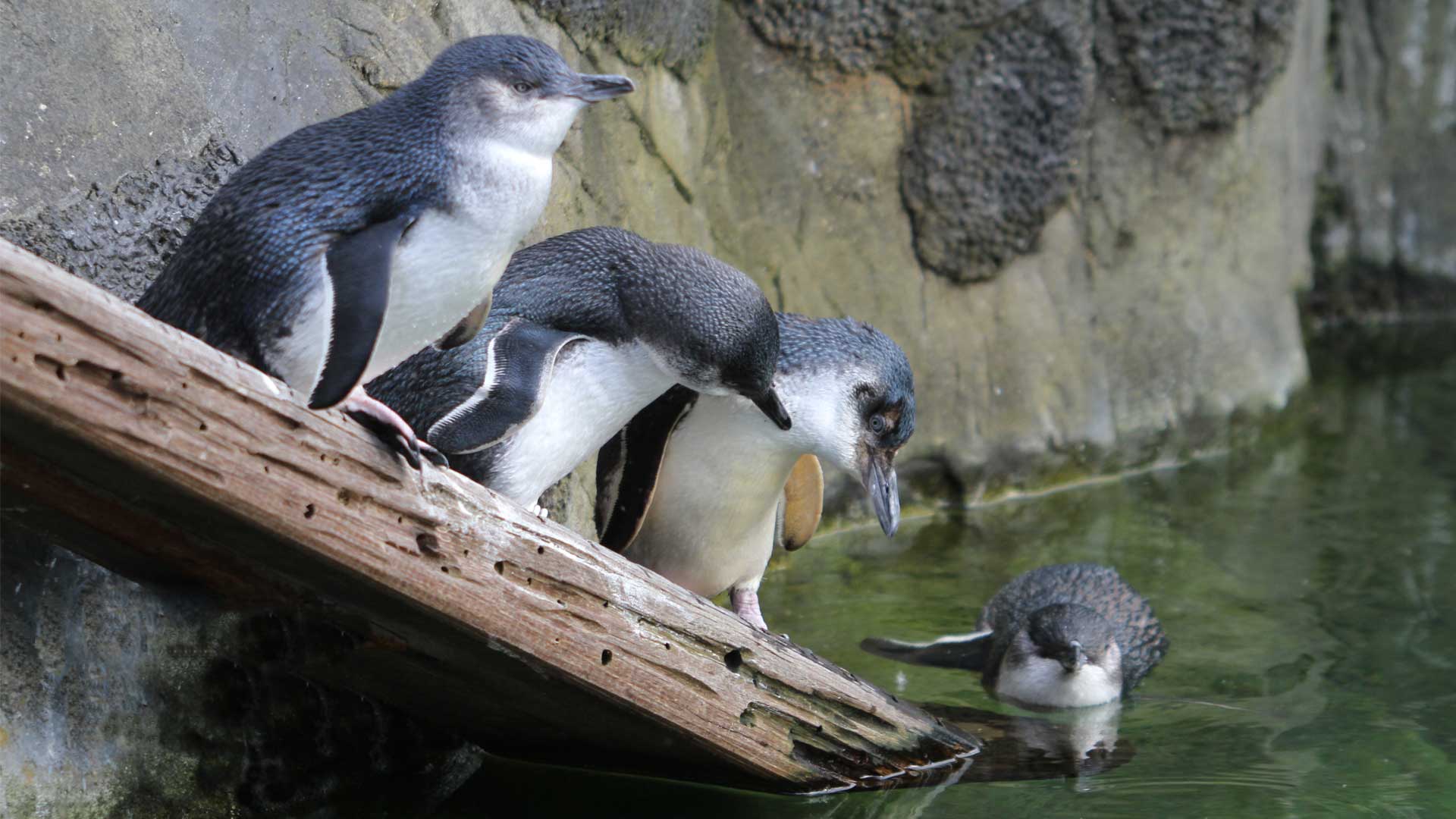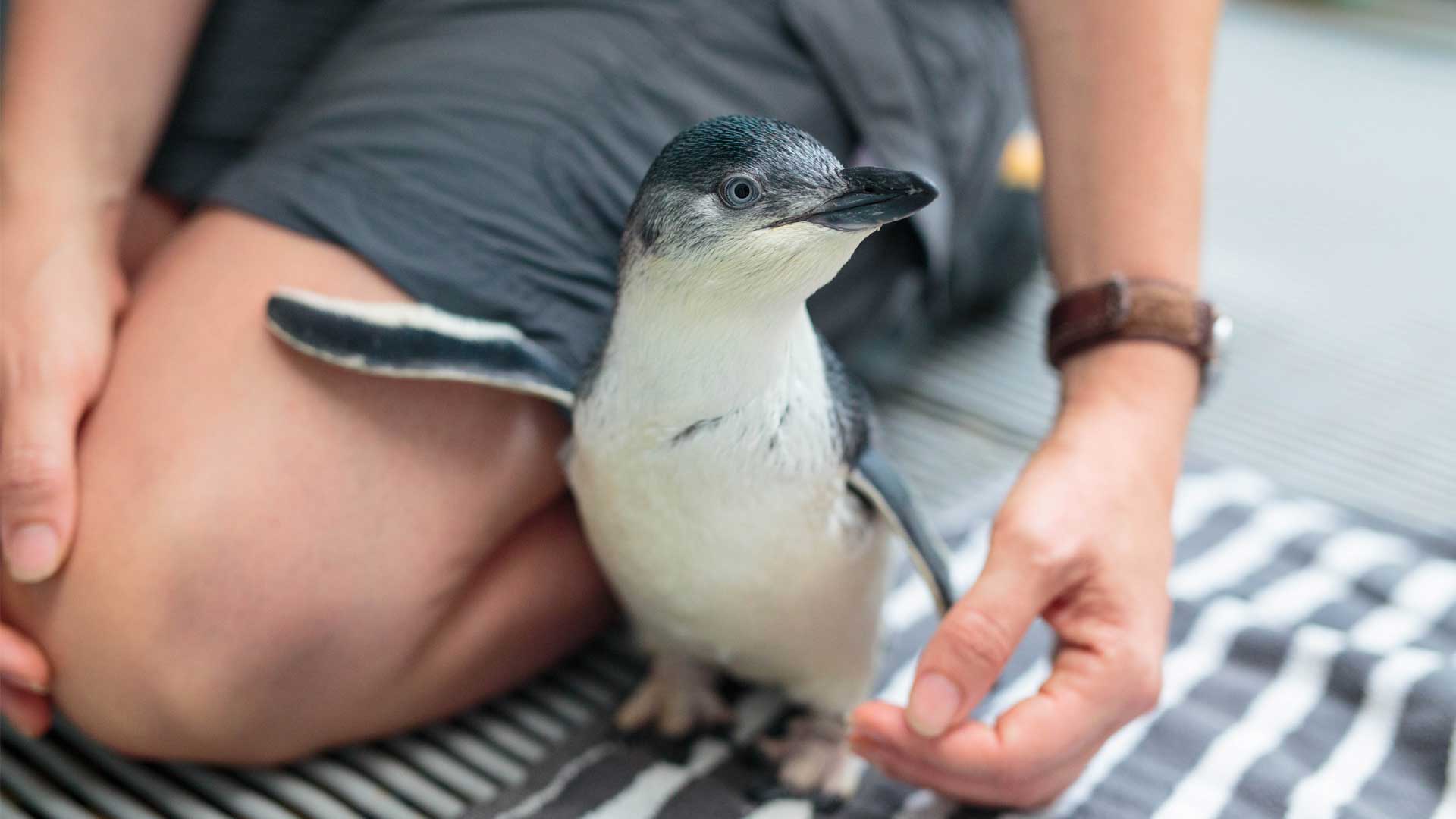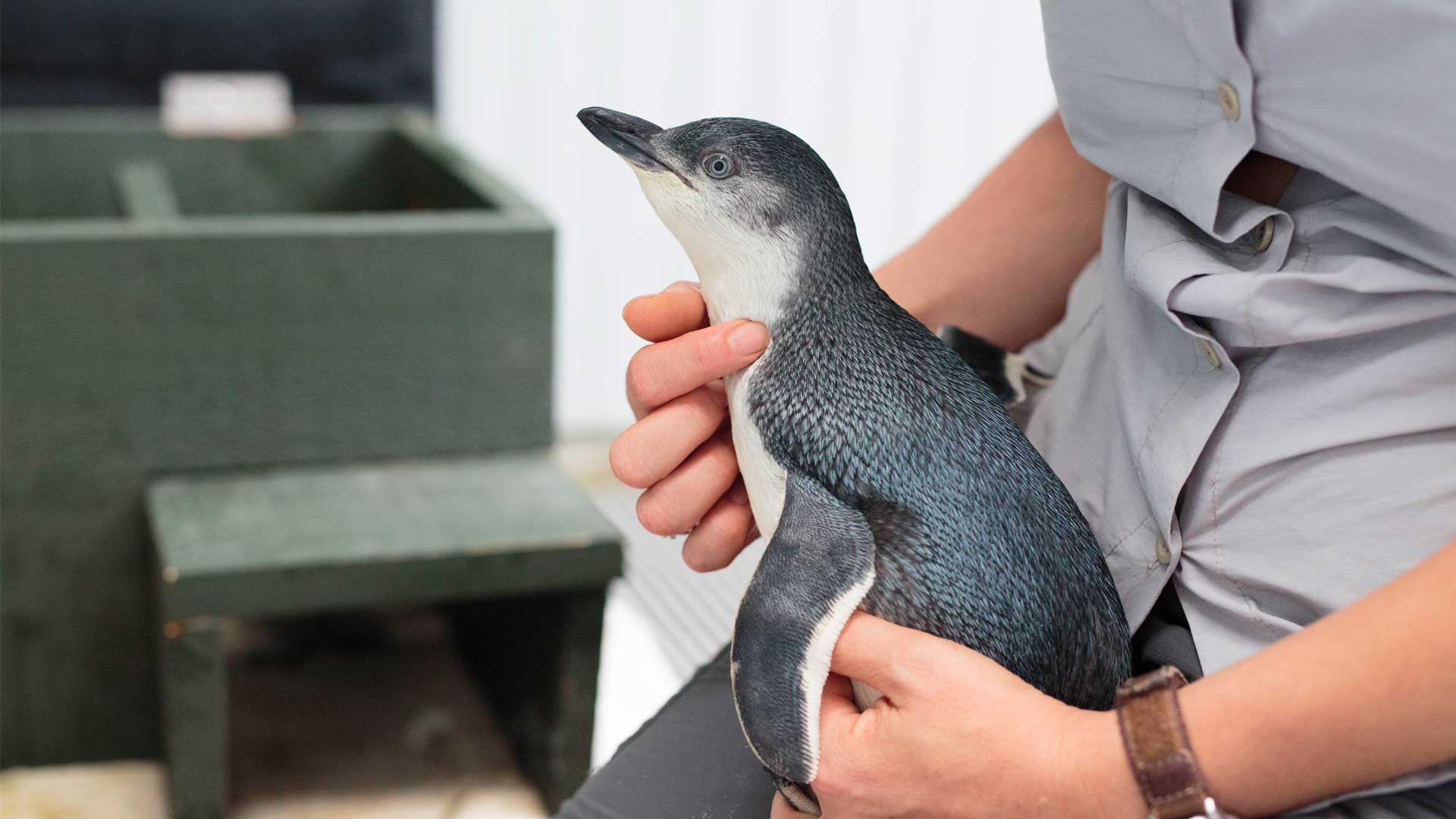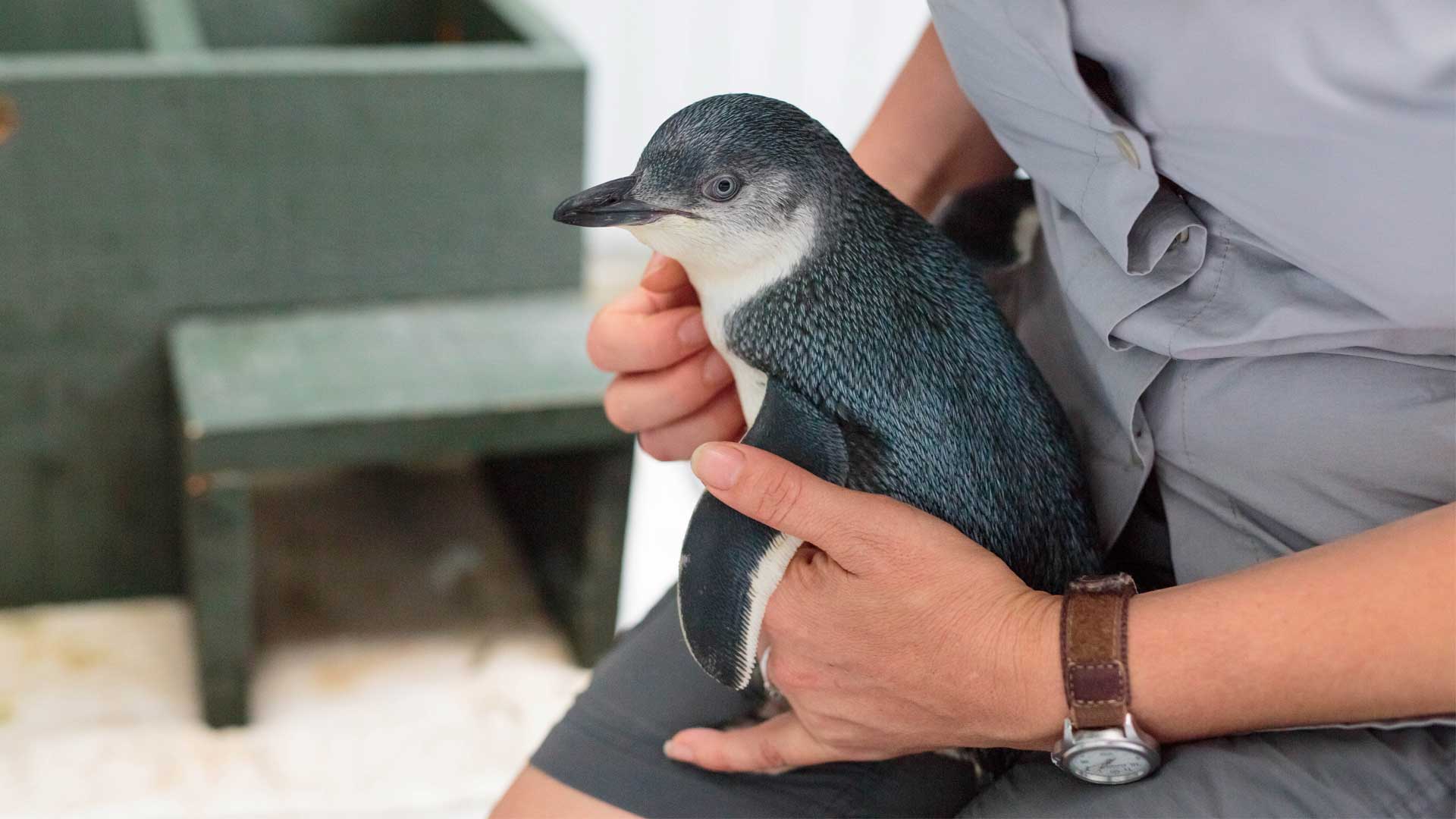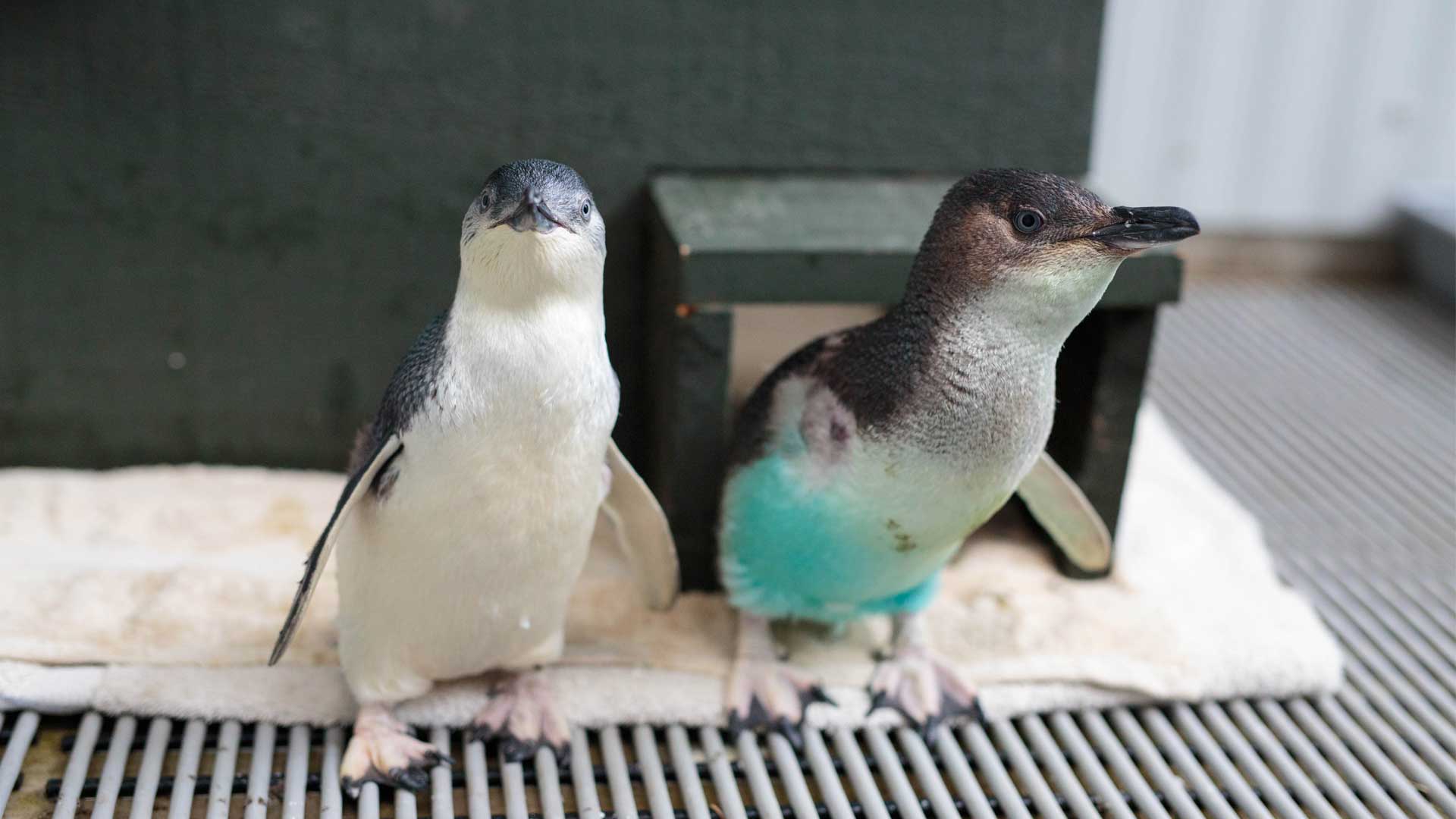Feathered friends
With over 10,000 feathers, three to four times the feather density of flighted birds, keeping them waterproof is a busy job. Kororā have an oil producing gland that helps to make their feathers waterproof.
Air is trapped in the downy feather bases which provides insulation when swimming. Stiff feather tips, prevent the feathers being compressed and stops the insulated air from escaping.
As feathers are essential to keep the penguins warm, once a year kororā will come ashore to molt (shed their feathers and grow new ones). This can be any time between November and March. The process can take up to two weeks. And if you see a penguin during this time, you will think they are having a bad hair day. Their old feathers will look extremely scruffy as the new ones grow underneath and push the old ones out. While this process takes place, penguins cannot go swimming and therefore do not eat. To ensure their survival, it is normal for penguins to bulk up and store fat prior to molting beginning.
A day out fishing
Kororā in the wild spend their days alone feeding at sea, congregating in small groups or ‘rafts’ offshore. They will return as a group to resting areas at dusk.
At home at the beach
Adult birds come ashore between May and June to prepare nests. They may waddle up to 1.5km from the sea and climb up to 300m to find the perfect nest site. Nests can be in underground burrows and natural holes. But it is also quite common to find them nesting under buildings, such as beach houses.


